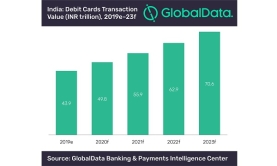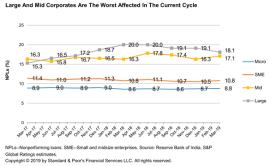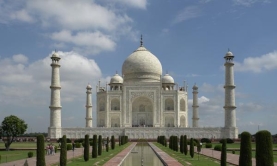India
Non-Performing Assets in India: An analysis over the years
The origination of the ongoing crisis of Non-Performing Assets (NPA) in India cannot be attributed to a single event nor can it be confined to a particular timeline. It was only in the mid 1990’s; post the economic liberalization when the country entered into the new millennium that the banks realized the sudden compounding of bad loans. The NPA situation essentially propelled in the mid 2000’s following over-optimism in the economy specifically between 2006-2008, on the back of strong economic growth and pending infrastructure projects completing on time and within specified budgets, a thing largely unheard-of till then. This irrational exuberance was followed by number of bad loans being advanced by the banks often by compromising due diligences. Riding on this positive environment, corporations were being granted loans based on recent performances and growth. Loans were being advanced at an alarming rate, and these corporations grew highly leveraged which led to most of the financing through external borrowings rather than internal equity. However, though post the global financial crisis of 2008, the bubbled economic growth stagnated and the repayment capability of the same corporations substantially decreased causing unparalleled financial stress on the banking and the corporate sectors. The strong projections for various projects started seeming unrealistic and it became increasingly clear there was no set structure in place to recuperate these loan advancements.
Non-Performing Assets in India: An analysis over the years
The origination of the ongoing crisis of Non-Performing Assets (NPA) in India cannot be attributed to a single event nor can it be confined to a particular timeline. It was only in the mid 1990’s; post the economic liberalization when the country entered into the new millennium that the banks realized the sudden compounding of bad loans. The NPA situation essentially propelled in the mid 2000’s following over-optimism in the economy specifically between 2006-2008, on the back of strong economic growth and pending infrastructure projects completing on time and within specified budgets, a thing largely unheard-of till then. This irrational exuberance was followed by number of bad loans being advanced by the banks often by compromising due diligences. Riding on this positive environment, corporations were being granted loans based on recent performances and growth. Loans were being advanced at an alarming rate, and these corporations grew highly leveraged which led to most of the financing through external borrowings rather than internal equity. However, though post the global financial crisis of 2008, the bubbled economic growth stagnated and the repayment capability of the same corporations substantially decreased causing unparalleled financial stress on the banking and the corporate sectors. The strong projections for various projects started seeming unrealistic and it became increasingly clear there was no set structure in place to recuperate these loan advancements.
Indian Banking: Rappelling down the NPA wall
Deteriorating asset quality led to enhanced provisioning, reduced profitability and a subdued capital position has created a challenging period for the Indian banking system. Poor asset quality levels also necessitated capital infusion into several banks, especially in the government owned banks. Policy measures like resolution under the Insolvency and Bankruptcy Code (IBC) has helped the banks in recoveries of certain bad accounts. The government has taken decisive measures towards consolidation of the banking sector by creating fewer banks of significant size which would be easier to operate and capitalize. Further, the government has announced infusion of capital to enable transition of these banks.
RuPay ends Mastercard and Visa duopoly in India
The number of debit cards issued hit 605.3 million.
$50b capital shortage may hit Indian banks in case of NBFC stress: report
State banks would be hit harder.
India's retail-focused NBFCs to outgrow banks: analyst
Large NBFCs grew at a CAGR of 20% in FY2014-2019.
APAC banks grapple with rising risk as corporate debt swells
Lenders in India and Indonesia are most vulnerable to a deterioration in corporate debt repayment capacity.
Massive mergers no fix for Indian banks' near-term challenges
Credit quality and capital shortfalls remain a key problem.
India unveils series of state-run bank mergers to revive debt-ridden sector
From 27, the total number of government-owned banks will be cut to 12.
Here's what delays the recovery of Indian banks
Troubled finance companies will hold banks back.
Rising risks hit Indian banks as regulators call to save NBFIs
The defaults of Infrastructure Leasing & Financial Services and Dewan Housing has investors spooked.
DBS plans foray into India's credit card space: report
The bank aims to launch credit card services by Q3 2020.
DBS is betting big on India
By refusing to ditch the physical bank branch and prioritising the improvement of its mobile offerings, DBS has fully embraced the phygital model in India.
Chart of the Week: Indian banks' credit growth hit 13% in May
Home and retail sectors drove lending gains.
Here's why Indian shadow banks are looking overseas
They have already clinched more than $2b worth of overseas bonds and loans in 2019. Bloomberg reports that shadow banks in India are looking outside the country in search for earnings amidst lenders that have been hesitating in extending funds.
Indian banks maintain strong earnings momentum in Q4
Year-end interest income rose 15.6% amidst sustained credit recovery.
India makes headway with public bank mergers
India is reportedly aiming to merge Punjab National Bank with up to three other banks.
Citi ties up with Paytm to launch credit card in india
The card offers waives an annual fee of $7.10 on annual spending over $710.














 Advertise
Advertise


















